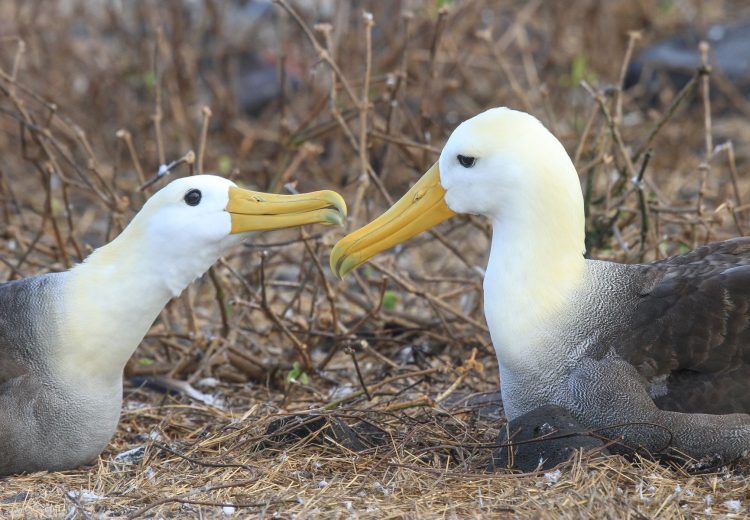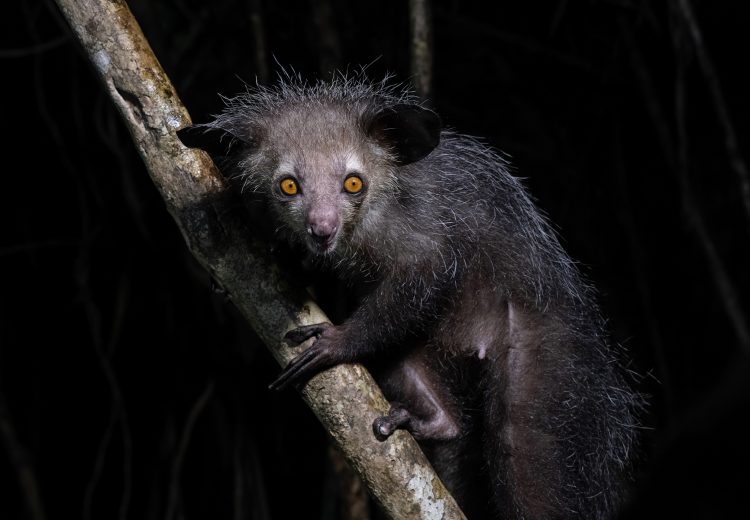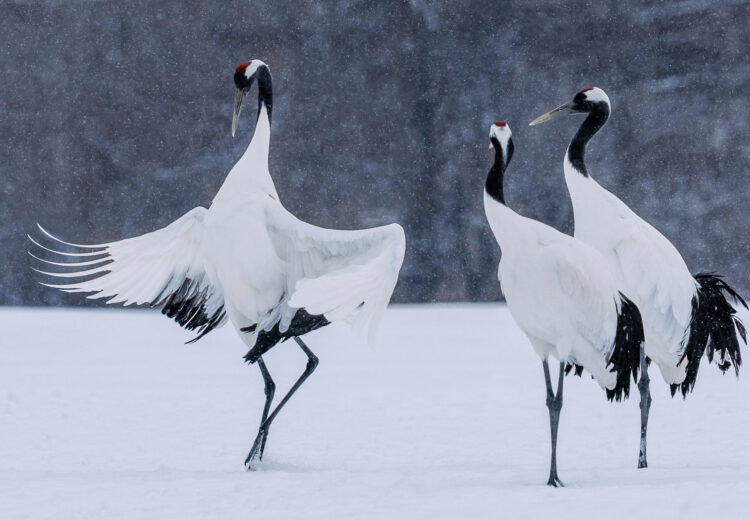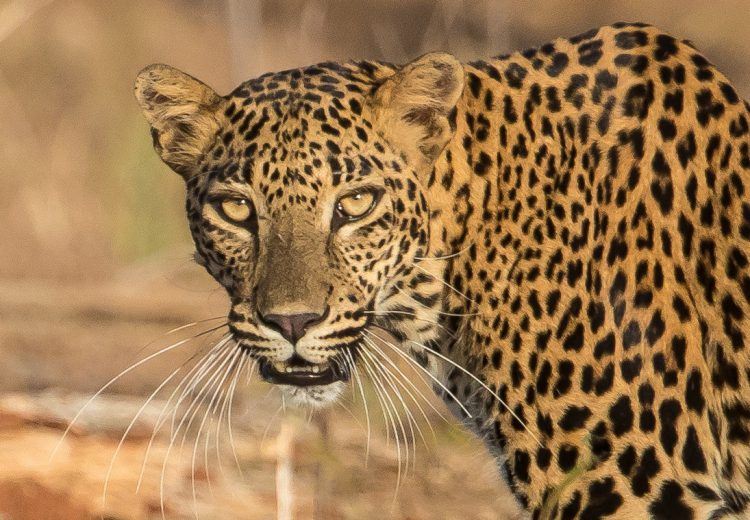Iceland
ICELAND: WILDLIFE & NATURE – Birds, Whales, Geysers & Waterfalls













































Rock Ptarmigans make noisy display flights (image by Mike Watson)

Long-tailed Jaeger (or Long-tailed Skua) is a very graceful bird (Image by Mike Watson)

Eurasian Whimbrel is one of the commonest breeding shorebirds in Iceland (image by Mike Watson)

Phalaropes show sexual role reversal, and this female Red-necked is much brighter than the male (Image by Mike Watson)

Long-tailed Jaeger (or Skua) is a very rare breeding bird in Iceland, maintaining a toehold with only a small handful of pairs in ‘the middle of nowhere’ (Image by Mike Watson)

The ancient church on Flatey (Image by Mike Watson)

A smart male Snow Bunting utters its territorial song from a rooftop (Image by Mike Watson)

Namafjall in northeast Iceland (image by Mike Watson)

In summer, Long-tailed Ducks look strikingly different from their winter dress (Image by Mike Watson)

There can be few finer looking ducks than a drake Harlequin! (Image by Mike Watson)

After generations of hunting them for food, Atlantic Puffins appear to be returning to Flatey (image by Mike Watson)

(Almost) midnight sunset at one of Iceland’s iconic landscape locations, Kirkjufell (image by Mike Watson)

The handsome Barrow's Goldeneye has a restricted range and in Europe is only found in Iceland (Image by Mike Watson)

A Long-tailed Jaeger (or Long-tailed Skua) watches its breeding territory (Image by Mike Watson)

A volcanic peak towers high over Stykkisholmur in northwestern Iceland (Image by Mike Watson)

Rock Ptarmigans can be found down at sea level in Iceland so no need to climb a mountain there for this one! (Image by Mike Watson)

Arctic Terns are everywhere in Iceland in summer (Image by Mike Watson)

Another view of a sounding Humpback Whale (Image by Mike Watson)

Great Skua (or Bonxie) is an uncommon breeding bird in Iceland, so our visit to its remote colony on a vast, barren lava plain is always an exciting highlight of our tour (Image by Mike Watson)

Red-throated Loon seen through a haze of Nootka Lupins (image by Mike Watson)

Common Redshanks are one of the commonest Icelandic shorebirds (Image by Mike Watson)

The cracked volcanic landscape of Myvatn (Image by Mike Watson)


This Black-tailed Godwit must have chicks nearby – so we did not linger long! (image by Mike Watson)

The female Red Phalarope is even more striking than the Red-necked (Image by Mike Watson)

Arctic Foxes are the most widespread mammalian predator on the island. This one is moulting out of its white winter coat (Image by Mike Watson)

Point blank Snow Buntings on pretty Flatey Island in southwest Iceland is usually a tour highlight (Image by Mike Watson)

White-winged Scoter is a vagrant from North America. We usually see something special on this tour (Image by Mike Watson)

At this time of year there is frenetic mating activity among the Red-necked Phalaropes (Image by Mike Watson)

An Arctic Tern hovering near its nest, ever watchful for potential predators (Image by Mike Watson)

A Barrow's Goldeneye sweeps in to a breeding lake (Image by Mike Watson)

A group of drake Harlequin Ducks huddle on a spray-spattered rock in Iceland (Image by Mike Watson)

This Rock Ptarmigan is moulting out of its white winter garb into the cryptic plumage of summer (Image by Mike Watson)

The island of Flatey (Image by Mike Watson)

A Common Snipe on a fence post in Iceland (Image by Mike Watson)

Common Ringed Plover makes a great photo subject among seaweed, although getting this shot can get a bit smelly! (Image by Mike Watson)

The impressive Dettifoss falls (Image by Mike Watson)

A Great Skua dives in to defend its nesting grounds (Image by Mike Watson)

Rock Ptarmigans occur at sea level in Iceland! (image by Mike Watson)

A Humpback Whale sounds, displaying its impressive tail flukes (Image by Mikle Watson)

Stokkur at Geysir blowing in the sunshine (image by Mike Watson)

Harlequin Duck in the rapids of a wild Icelandic river (Image by Mike Watson)

A Whimbrel calls from the flower-filled tundra (Image by Mike Watson)
ICELAND WILDLIFE PHOTOGRAPHY TOURS WITH WILD IMAGES
Iceland is truly a land of ice and fire and is one of the world’s most spectacular destinations (one of the reasons its landscapes have featured in so many films and TV dramas, like the recent ‘Game of Thrones’ for instance). It is one of Europe’s last great tracts of unspoilt wilderness, a place where a tapestry of enormous ice-caps, rushing waterfalls, spouting geysers, brooding volcanoes, lush green meadows and vast plains of lava combine to create some of the most stunning and varied scenery found anywhere on earth. This large island marks the meeting place of two continents, a point on the planet where two tectonic plates split, Europe and America separate, and the Old World meets the New. As if all this was not enough, Iceland also enjoys summers filled with photogenic wildlife!
Our journey will take us from Reykjavík in the southwest to the idyllic island of Flatey in Breiðafjörður, with its profusion of tame nesting birds that include numerous Red-necked Phalaropes, Arctic Terns and Common Eiders. We also have a good chance of getting close to a Red (or Grey) Phalarope here. Next up is the rugged Snaefellsnes Peninsula and its spectacular volcanic scenery and seabird colonies that include Thick-billed Murres (or Brünnich’s Guillemots) amongst the many Common Murres (or Common Guillemots) and Razorbills. We will then make our way to northeast Iceland in search of Harlequin Ducks, Barrow’s Goldeneyes, Horned (or Slavonian) Grebes, Common Loons (or Great Northern Divers) and yet more Red-necked Phalaropes in the Lake Myvatn area. We will not have to search too hard! We should also see (but we also have a slim chance to get close to) the magnificent Gyrfalcon here. The surrounding areas have colonies of Parasitic Jaegers (or Arctic Skuas) and Great Skuas and even a very small number of Long-tailed Skuas. During our time in the northeast we will also make two whale watching boat trips from the little port of Husavík and also visit Godafoss and Detifoss, Iceland’s biggest waterfalls by volume, plus yet more amazing volcanic scenery. Eventually we will return to Reykjavík via Iceland’s ‘golden triangle’ of attractions, Gullfoss waterfall, the geysers of Geysir (where the word geyser comes from!) and the spectacular site of the first parliament at Þingvellir.
We will focus mostly on bird photography on this tour but there will also be plenty of opportunity to shoot landscapes as well as whales on two very well organised whale watching trips out of Husavík. The number of bird species is not high but the ones we will concentrate on more than make up for this in terms of looks, tameness and lovely settings. Although we follow more or less the same route as our Birdquest division’s birding tour of Iceland we will spend more time in the most productive areas for photography and all of our time on getting close to photographic subjects rather than birding, as well as having an overnight stay on the delightful island of Flatey, one of the highlights of the tour.
We also ought to mention the spotless, comfortable hotels, tasty home-cooked food and the friendly Icelandic folk that add so much to this classic photo journey.
Accommodation & Road Transport
The hotels are of a good standard throughout and usually all rooms have private bathrooms, although some off the beaten track locations may have shared bathrooms. Road transport is by minibus/passenger van. Roads are good where sealed, but this tour will also involve some driving on Iceland’s well maintained gravel roads.
Walking
The walking effort is easy throughout.
Climate
The weather is very changeable, with sunny periods alternating with rain or even light snow and overcast conditions. Temperatures range from cold to fairly warm.
Photographic Equipment
For bird photography we recommend an effective focal length of 400-500mm or more. The use of a tripod is also recommended at times. For whales we recommend an effective focal length of anything from 70-500mm depending on how much background you want to include. Some of the whale encounters can be fairly close. We also recommend a short wide angle lens (up to 35mm effective focal length) for landscape photography and there will be plenty of good opportunities for slow exposures/time lapse photography like waterfalls, coastal scenery and most likely interesting clouds.
Alternatively, you can get wonderful results with a high quality digital compact camera with an optical zoom. If you have questions about what equipment you ought to bring, please contact us.
Reykjavík city breaks
Reykjavík is one of the world’s most endearing capital cities. With a population of just over 121,000, it is just about the same size as Watford! It is consequently more like a provincial town and it has a reputation as a centre of arts, museums and culture as well as dining out and partying! We can easily arrange extra nights for you in Reykjavík in connection with the tour and you can also be picked up there en route to Stykkisholmúr or dropped off there after the end of the tour. Please contact the Wild Images office for details.
Photographic Highlights
- Awesome volcanic landscapes, coastal scenery and waterfalls.
- Point blank photogenic phalaropes during an overnight stay on the lovely island of Flatey.
- Outrageous drake Harlequin ducks shooting rapids on fast flowing upland streams.
- Smart Barrow's Goldeneyes at their only breeding site in Europe.
- Breeding-plumaged Horned (or Slavonian) Grebes and Common Loons (or Great Northern Divers) on remote lakes.
- A profusion of shorebirds, many unconcerned at our presence, from noisy Whimbrels and Black-tailed Godwits to European Golden Plovers and more.
- bird colonies on impressive basalt cliffs including the high arctic breeding Thick-billed Murre (or Brünnich's Guillemot).
- Great Skua and Parasitic Jaeger (or Arctric Skua) colonies (and hopefully Long-tailed Jaeger as well).
- Two whale watching trips with a 90%+ success rate for Humpback and/or Minke Whales.
OUTLINE ITINERARY
- Day 1: Afternoon tour start at Keflavík international airport near Reykjavík. Transfer to Stykkishólmur.
- Day 2: Day excursion by ferry to Flayey. Overnight at Stykkishólmur.
- Day 3: Return to Flatey for the morning, then drive to Hellisandúr on the Snaefellsnes Peninsula.
- Day 4: Snaefellsnes Peninsula, then drive to Husavík in northern Iceland.
- Days 5-8: Exploring Lake Myvatn, Dettifoss and Skjálfandi Bay (including 2 whale watching trips).
- Day 9: Drive to Gulfoss.
- Day 10: Visit famous Geysir and Þingvellir. Afternoon tour end at Keflavík international airport.
To see a larger map, click on the square-like ‘enlarge’ icon in the upper right of the map box.
To see (or hide) the ‘map legend’, click on the icon with an arrow in the upper left of the map box.
To change to a satellite view, which is great for seeing the physical terrain (and for seeing really fine details by repetitive use of the + button), click on the square ‘map view’ icon in the lower left corner of the ‘map legend’.
PRICE INFORMATION
Wild Images Inclusions: Our prices include surface transportation, accommodations, meals and entrance fees.
Our tour prices also include all tips for accommodation/restaurant staff.
Deposit: 20% of the total tour price. Our office will let you know what deposit amount is due, in order to confirm your booking, following receipt of your online booking form.
TO BOOK THIS TOUR: Click here (you will need the tour dates)
If you are travelling alone, the single supplement will not apply if you are willing to share a room and there is a room-mate of the same sex available.
This tour is priced in US Dollars. Amounts shown in other currencies are indicative.
Air Travel To & From The Tour: Our in-house IATA ticket agency will be pleased to arrange your air travel on request, or you may arrange this yourself if you prefer.
ICELAND WILDLIFE PHOTOGRAPHY TOUR: DETAILED ITINERARY
Day 1
The tour will start this afternoon at Keflavík international airport near Reykjavík, and from here we will travel northwestwards to the small port of Stykkishólmur on the shores of Breiðafjörður (= ‘Spreading Fjord’), a 50km wide bay on Iceland’s west coast for a one night stay. We should arrive in time for an evening photography session, during which we will search for shorebirds in (weather permitting!) golden evening light as well as Rock Ptarmigans, which breed at sea level here. Stykkishólmur is a small port, established as a trading post in the middle ages. Apart from fishing it’s main income is now derived from tourism and most importantly it is here that the ferry departs for idyllic little Flatey (= ‘Flat Island’).
Day 2
This morning we will take the ferry Baldur (= ‘Baldy!’) that crosses the bay to the island of Flatey, home to some of the only breeding pairs of Red Phalarope left in Iceland. This small island is alive with breeding birds and we shall enjoy a truly intimate and dynamic encounter with its inhabitants. We will also have the pleasure of staying overnight here in a delightful little hotel. Like the other pretty painted wooden buildings in the old village, it has been tastefully restored in a traditional style. Flatey was home to an Augustine monastery established in the 12th century but later grew to be a thriving settlement and a centre for art and literature. The Flateyjarbók, (the Book of Flatey), one of the most important of the ancient Icelandic Viking sagas, was preserved here in the Middle Ages. Although the human population has dwindled since the 19th century its avian inhabitants continue to thrive. It is home to 35 species of breeding bird and of particular interest to us will be its phalaropes. Red-necked is common all over the island and can be watched at eye level on some very photogenic small pools. However, we will need luck to photograph Red Phalarope on their occasional visits to the areas of the island accessible to human visitors during the summer breeding season. In contrast Arctic Terns are everywhere, as are smart Common Eiders, Common Redshank, Oystercatcher and Snow Bunting, many of which can be found in very nice situations. Although Puffin and Shag are on the locals’ menu they can also still be found here. The tiny island itself lives up to its name and is only 16m at its highest point and 20m wide at its narrowest! It only takes around 20 minutes to walk its entire length (if you can manage to drag yourself away from the delicious cakes at the hotel that is) and wandering around Flatey, camera in hand, is a must for anyone interested in bird photography. A stay on Flatey is a real highlight and it is one of the nicest places we have visited anywhere in the world.
Day 3
After a morning of photography on Flatey we will eventually tear ourselves away from its wildlife in time to catch the ferry back to Stykkishólmur in the early afternoon.
Once back on the mainland we will make our way west along the Snaefellsnes Peninsula. This long finger of land is one of the most enchanting regions in Iceland. Nearing the western edge of the peninsula, we will pass the stunning Snaefellsjökull volcano and glacier, which rises majestically from the adjacent coastline to a height of 1500 metres. The glacier is extremely beautiful and reputedly endowed with great powers: it was the source of inspiration for Jules Verne’s world famous adventure novel ‘Journey to the Centre of The Earth’. We shall make our way to the windswept cliff tops on the peninsula’s western tip, where we will photograph the breeding colonies of seabirds that include Common Guillemots (or Common Murres), Razorbills and Atlantic Puffins, which here share their ledges with small numbers of Brünnich’s Guillemots (or Thick-billed Murres). The lichen-covered lava fields inland of the cliffs are home to ptarmigans and Snow Buntings and tiny copses of stunted trees along the peninsula hold Common Redpolls and Redwings of the distinctive local Icelandic forms. We may even spot an Orca from the cliffs here, although they are more commonly seen here in the winter months when they follow herring shoals.
We will spend the night towards the western end of the peninsula at the small town of Olafsvik. This evening we will go out in search of Arctic Fox, a shy animal in these parts owing to continued persecution.
Day 4
This morning we will leave behind the snow-capped volcanoes of the western fjords, and travel northeast to Húsavík, where we will stay for five nights.
Days 5–8
We will make several visits to the world famous Lake Myvatn area (‘Lake of the flies’ but hopefully we will be a little too early for the main swarms!). Lake Myvatn is shallow and nutrient-rich and sustains an exceptionally large number and variety of breeding wildfowl. No fewer than 16 species of duck breed at this site including some of Europe’s only breeding Barrow’s Goldeneyes. We will also focus on getting close to outrageously plumaged drake Harlequin Ducks, which breed on rushing upland streams here, beautiful Horned (or Slavonian) Grebes as well as magnificent Common Loons (or Great Northern Divers) both of which can also be found on remote lakes in this area. We can expect more smart Red-necked Phalaropes here, either on the main lake itself or the pools around its shore, twirling back and forth, catching numerous hatching midge larvae. The Myvatn area is one of the best sites on the island to see the magnificent Gyrfalcon and although we can only realistically expect distant views we know some good places to see this magnificent bird. Other birds which we will look for in the area include the superb Long-tailed Skua (or Long-tailed Jaeger). The terrain, as in most of Iceland, shows much sign of volcanic activity and we shall stop to admire the basaltic ‘volcanic castles’ at Dimmuborgir and the boiling mud pools and sulphur-encrusted pools at Krafla, an active volcano.
While based in Húsavík, located on the north coast of Iceland only 80 kilometres south of the Arctic Circle, we will take two of the incredibly well-organised whale-watching trips into the cold waters of Skjálfandi (= ‘shaky’) Bay, where we will have an excellent chance of seeing both Humpback and Minke Whales against a dramatic backdrop of snow-capped mountains. Minke is the smallest of the northern baleen whales and good numbers visit the bay every summer to gorge on the bountiful supply of shoaling fish. Humpback Whales are also common here and in fact the whale-watching trips here are so well-organised that they have a 90%+ success rate of whale sightings at this time of year. The whales often put on a great spectacle for observers and behavior such as spy-hopping, breaching and lunge feeding by the Humpbacks is regularly observed. The Minkes are usually less extrovert and a forward dive is often all they will offer. This is also an opportunity to watch the playful White-beaked Dolphin and there is even a small chance to see the largest creature, which has ever lived, Blue Whale, however, we will need to be lucky to coincide with one of their infrequent summer visits to ‘shaky’ bay.
We will make several other excursions in the northeast, one to visit a remote Great Skua (or ‘Bonxie’) colony on a desolate lava plain, where its residents are sure to come and take a look at us! We will also admire some of the geological features of the northeast including a meeting place of the North Atlantic tectonic plates as well as the impressive Dettifoss, Iceland’s largest waterfall by volume. At 100 metres wide and 45 metres tall the falls carry the thundering flow of the Jökulsá á Fjöllum, a meltwater river from the Vatnajökull glacier, Iceland’s largest ice cap. The falls were featured in the 2012 science-fiction film Prometheus, as a landscape on a primordial Earthlike planet.
Day 9
We will leave the northeast today and retrace our steps westwards and southwards. Eventually we will reach the small settlement of Gullfoss where we will spend the night. Just north of the settlement is the spectacular waterfall on the Hvitá River that gives its name to the area, which we will naturally stop to photograph. Let’s pray for some interesting evening light!
Day 10
This morning we will have time to experience the impressive Strokkur (‘The Churn’) geyser at Geysir, which shoots a column of boiling water up to 20-30 metres high every 10 minutes or so. Just before the waterspout the geyser forms a beautiful dome of water that is equally photogenic. We will also visit the very scenic outdoor setting of Iceland’s first parliament at Þingvellir. This was chosen for both its dramatically beautiful setting beside the Þingvallabvatn lake and for its acoustics, and served as the site for the Icelandic parliament from 930 to 1798. The area is also fascinating from a geological standpoint as a place where the Eurasian and North American tectonic plates meet, with some impressive fissures and cliffs at the fault line. The tour ends in the early afternoon at Keflavik airport.
Iceland Wildlife & Nature Tour Report 2022
by Mike Watson
I can’t say how good it felt to step outside the airport terminal at Keflavik this time and feel the cold clean air. It was happening at last! It has been a difficult couple of years for everyone, particularly for us in the travel industry, and our frustrated photographers stuck at home. Although I have […]
View Report
Other Wild Images Tours featuring islands

South America (including Galapagos)
May 2025
GALAPAGOS ISLANDS: Extraordinary wildlife photography in the footsteps of Darwin

Madagascar
October 2025















































